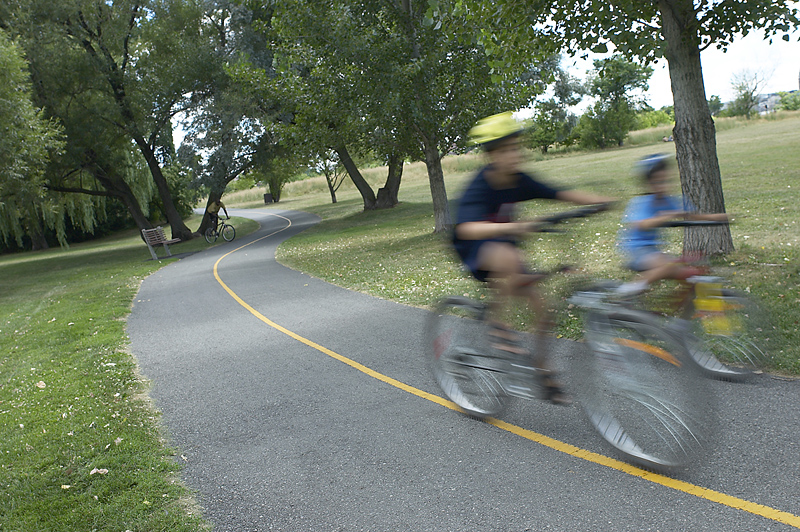
THURSDAY, Dec. 10 (HealthDay News) — Parents are crowding into stores this holiday season, searching for toys that will prompt smiles, cheers and hugs from their kids.
But parents also need to keep in mind that there are potentially dangerous toys on store shelves, so they must use judgment and common sense with every purchase.
“There are still some items that fall through the cracks,” said Liz Hitchcock, a public health advocate for U.S. PIRG, who wrote this year’s Trouble in Toyland report for the non-profit consumer protection group. “Consumers buying toys should be careful of what they buy.”
There is encouraging news: New federal laws passed in the wake of the massive toy recalls of 2007 are kicking in, which means the toys out for this year should be among the safest ever, experts said.
“New federal safety rules are in place that should give consumers greater confidence when they go toy shopping this holiday season,” said Nychelle Fleming, a spokeswoman for the U.S. Consumer Product Safety Commission. There are now tough limits on lead and phthalates (endocrine disruptors commonly used in plastics) in toys, as well as new mandatory safety standards.
“This is the first holiday shopping season where you’ll see these things implemented,” she said.
Government and business reaction to the problems of 2007 also have improved toy safety, Fleming noted. There were 162 toy recalls in 2008; this year, by November there had only been 38 toy recalls, she said.
The Consumer Product Safety Commission attributes the drop in toy recalls to several factors, Fleming said: toy manufacturers placing a greater emphasis on quality, improved product enforcement at United States ports, better cooperation with countries that produce toys, and sharper consumers putting more thought into what they pluck off store shelves for purchase.
Despite this new emphasis on toy safety, researchers at U.S. PIRG still found in their Trouble in Toyland report toys on shelves in September and October that pose potential hazards to children. These include:
-
Choking hazards, which prompted the most toy safety recalls in 2009, according to U.S. PIRG. By November, 5.3 million toys and children’s products had been pulled from store shelves — part of the 38 total toy recalls — due to choking hazards.
Still, the group said it was able to find toys for children under age 3 that contained small parts. “Kids under the age of 3 put everything in their mouth,” Hitchcock said. Parents should use a cardboard toilet paper tube or a choke tube to test individual pieces of a toy and see if they will pose a choking hazard.
-
Toys containing toxins. Despite the new federal laws, U.S. PIRG found a number of children’s products that contained high amounts of lead or phthalates.
“We were disappointed to find lead in products on store shelves, because a lot of attention was paid to lead in toys,” Hitchcock said. “Parents can’t just trust that every product on a store shelf is safe and free from excessive amounts of lead.”
People who want to avoid the potential of lead in their children’s toys should avoid buying certain types of toys, Hitchcock said. These include painted toys and inexpensive costume jewelry made out of metal.
-
Loud toys. A new safety concern involves toys that could damage children’s hearing.
ASTM (formerly the American Society for Testing and Materials) has created standards that limit the noise made by most children’s toys to 85 decibels. But U.S. PIRG found a number of toys that surpassed that limit. “If it seems too loud for the parent, it’s certainly going to be too loud for the child,” Hitchcock said.
Another type of toy — one that many people rarely think of as a toy — caused the most toy-related deaths and injuries in 2008, according to the Consumer Product Safety Commission.
Riding toys — tricycles, bicycles, skateboards, roller skates, scooters and the like — caused nine of the 19 reported deaths in 2008. They also accounted for 26 percent of the 172,700 toy-related injuries treated in hospital emergency departments, more than any other type of toy, the agency said.
People who buy their child a riding toy need to buy the helmet, pads and other safety equipment necessary for safe use, Fleming stated.
“The complete gift includes all the safety gear,” she said.
When shopping, parents can improve their chances of picking a safe toy by paying attention to the warning labels on toy packaging, Fleming and Hitchcock said.
The labels don’t pertain to a child’s aptitude. Rather, they take into account a wide range of developmental factors like dexterity and “mouthing behavior” to determine which toys pose a hazard to younger children.
“Always be a good label reader,” Fleming said. “These labels are provided for safety.”
More information
For more on the Trouble in Toyland report, visit U.S. PIRG.

